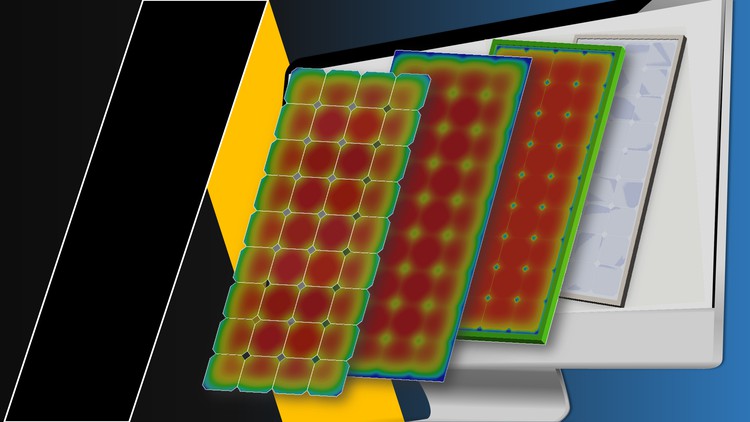
With Just One Course, you can go from beginner to be an expert in ANSYS PV simulations!
What you will learn
How to design 3D models of solar panels.
How to define materials properties.
How to create the proper connections between panel parts
How to generate a structural mesh.
Identifying the appropriate boundary conditions.
Simulating the PV model and reporting the findings.
Description
Welcome to the *first* and most straightforward ANSYS thermal analysis course available on Udemy for PV simulations.
“This course will teach you how to make a thermal analysis from scratch for any PV module.”
Let me tell you more about it, we will begin the course by measuring and sketching a real solar PV panel, as well as depending on scientific literature for measurements that cannot be taken from the panel practically. The technique of sketching and creating the bodies was demonstrated in detail, so that the lecture on this topic clearly describes modeling all layers of the PV panel, allowing you to create this panel or any other panel using the same procedure.
Then, we’ll look at the heat transfer modes that occur all through PV operation to determine the solar panel’s required thermophysical properties. You’ll know which properties are important in thermal analysis and which aren’t. These properties will be added to Ansys Engineering Data and linked to our simulation.
The course will next take you to learn about the many types of connections in Ansys. Which kind best describes what occurred between the PV layers? We will define the surfaces and make the connections in detail; don’t worry, you only need to pay close attention to the lecture on the topic because everything that follows it is based on it.
Following that, you will learn how to generate a mesh, as well as a brief explanation of mesh generating methods and principles, as well as how to screen its metrics.
After that, we will explain how ANSYS can be used to perform PV analysis in a direct manner, without the complexities that some researchers employ, which waste computer resources while providing “no benefit”. There is a very important article in this course that represents a lecture on this topic, and you should read it very carefully.
Then, we will explain the energy balance equation on a photovoltaic module, as well as clarify some key points in the analysis methodology. In a single lecture, all the theoretical and empirical equations related to the energy balance are explained. The equations are then prepared in Excel sheet format. You can connect it to ANSYS to avoid getting tired of computing data.
Afterwards there will be a lesson on how to define the boundary conditions for the PV thermal analysis. and what the simulation’s most important conditions are. Also covered are how to connect a Microsoft Excel spreadsheet to the thermal analysis and how to calculate the applied heat flux on each PV layer.
And then, in the last lecture, we solve the model and show the outcomes.
Content